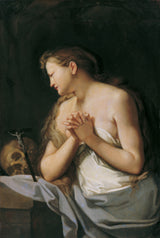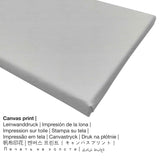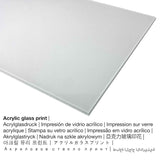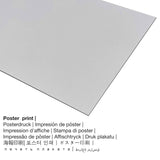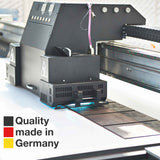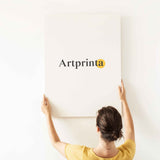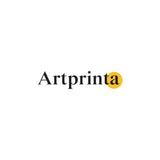Franz Carl Remp, 1710 - The Penitent St. Mary Magdalene - ọmarịcha nka
Ụtụ gụnyere. Mbupu gbakọrọ na ndenye ọpụpụ.
Product ọmụma
Nke a kpochapụwo art masterpiece e sere site na Baroque artist Franz Carl Remp in 1710. The over 310 year-old original version had the following size: 100 x 68 cm and was made on the medium mmanụ na kwaaji. Ọ gụnyere na nke Belvedere nchịkọta dijitalụ na Vienna, Austria. Site n'ikike nke © Belvedere, Vienna, nọmba ngwa ahịa: 4310 (ikike - ngalaba ọha). Ọzọkwa, ihe nkiri ahụ nwere akara kredit ndị a: zụta site na mkpokọta Ignaz Attems, Graz na 1949. Ọzọkwa, itinye n'ọnọdụ dị na eserese format ma nwee oke nke 2: 3, nke pụtara na ogologo bụ 33% mkpụmkpụ karịa obosara. Franz Carl Remp was a painter, whose art style can mainly be classified as Baroque. The artist was born in the year 1675 in Ratmannsdorf / Radovljica, Slovenia and died at the age of 43 na 1718 na Vienna.
Nkọwa ndị ọzọ site na ihe ngosi nka (© - nke Belvedere - Belvedere)
This moving account, which originally was "In Count room" of the Palais Attems in Graz, shows the penitent Mary Magdalene. In particular, the detail of the trickling over the left cheek tears helps to attract the sympathy of the viewer. It is interesting that we have a lot more the impression of a concrete portrait and not those of an idealized saints before us. Though not to the Magdalene representations, there is but one similarity that figure with Christ in Guido Reni "Baptism of Christ" in the Kunsthistorisches Museum Vienna. Further works by Johann Carl Loth and above all of his student Hans Adam Weissenkircher should be integrated into the series of models - even if Remp did not apply the same quick brush stroke. [Georg Lechner, 5/2010]
Data ndabere na mpempe nka
| Aha nka: | "The Penitent St. Mary Magdalene" |
| Nhazi nka nka: | sere |
| Okwu nche anwụ: | nka ochie |
| Time: | 18th narị afọ |
| Afọ nka: | 1710 |
| Afọ nka: | ihe dị ka afọ 310 |
| Usoro izizi: | mmanụ na kwaaji |
| Akụkụ izizi: | 100 x 68 cm |
| Ụlọ ihe ngosi nka: | Belvedere |
| Ebe ngosi nka: | Vienna, Austria |
| Weebụsaịtị ihe ngosi nka: | www.belvedere.at |
| License: | ngalaba ọha |
| Site n'aka: | © Belvedere, Vienna, nọmba ngwa ahịa: 4310 |
| Ebe kredit nke ọrụ nka: | zụta site na mkpokọta Ignaz Attems, Graz na 1949 |
Onye na-ese ihe
| aha: | Franz Carl Remp |
| Ọrụ: | onye na-ese ihe |
| Otu nka: | nna ukwu ochie |
| Ụdị nka: | Baroque |
| Nwụrụ na afọ nke: | 43 afọ |
| Afọ amụrụ: | 1675 |
| Ebe amụrụ onye: | Ratmannsdorf / Radovljica, Slovenia |
| Nwuru: | 1718 |
| Nwụrụ na (ebe): | Vienna |
Ngwa ngwaahịa a na-ahọpụta
Maka ngwaahịa ọ bụla anyị na-enye ihe dị iche iche & nha. Nhọrọ ndị a dị maka n'otu n'otu:
- Kwaaji: A canvas print is a printed cotton canvas stretched on a wooden stretcher. Your canvas print of your favorite work of art will allow you to transform your individual fine art print into a large artwork. Hanging a canvas print: Canvas prints are relatively low in weight, which implies that it is quite simple to hang up the Canvas print without the use of extra wall-mounts. Therefore, a canvas print is suitable for all kinds of walls.
- Akwụkwọ mmado ebipụtara (akwa akwa akwa): Our poster print is a printed cotton canvas paper with a slight texture on the surface, which reminds the actual masterpiece. A print poster is optimally designed for framing the fine art print in a customized frame. Please note, that depending on the absolute size of the poster print we add a white margin between 2-6 cm around the artwork, which facilitates the framing with a custom frame.
- Mbipụta ọla (aluminium dibbond): This is a metal print manufactured on aluminium dibond with an impressive depth. Its non-reflective surface creates a modern look. The white & bright sections of the artpiece shimmer with a silk gloss but without any glare. The colors of the print are luminous and bright, fine details of the print are very clear, and the print has a a matte appearance that you can literally feel.
- Mbipụta iko acrylic (nke nwere ezigbo mkpuchi iko): An acrylic glass print, which is often referred to as a plexiglass print, will change your favorite original artwork into brilliant home décor. The artwork is being printed with the help of state-of-the-art UV direct print machines. This makes vivid, stunning color shades. The major benefit of a plexiglass fine art print is that sharp contrasts and image details will be recognizeable thanks to the precise tonal gradation of the picture.
Banyere edemede a
| Bipụta ngwaahịa: | ọmarịcha nka |
| Mmeputakwa: | dijitalụ mmeputakwa |
| Produzọ mmepụta: | Mbipụta UV ozugbo |
| Nlụpụta: | arụpụtara na Germany |
| Ụdị ngwaahịa: | a na-achọ |
| Eji ngwaahịa a chọrọ: | mgbidi mma, mgbidi gallery |
| Ndozi onyonyo a: | nhazi ihe osise |
| Ụdị anya: | ogologo ruo obosara 2: 3 |
| Nsonaazụ: | ogologo bụ 33% mkpụmkpụ karịa obosara |
| Akwa mmeputakwa dị: | Mpempe akwụkwọ, akwụkwọ mmado (akwụkwọ kwaaji), mbipụta ọla (aluminium dibond), mbipụta iko acrylic (nwere ezigbo mkpuchi iko) |
| Nhọrọ nha nke akwa akwa n'elu etiti ihe na-agbatị (mbipụta kwaaji): | 20x30cm - 8x12", 40x60cm - 16x24", 60x90cm - 24x35", 80x120cm - 31x47", 100x150cm - 39x59" |
| Mpempe iko acrylic (nwere ezigbo mkpuchi iko) nha: | 20x30cm - 8x12", 40x60cm - 16x24", 60x90cm - 24x35", 80x120cm - 31x47", 100x150cm - 39x59" |
| Nhọrọ nke mbipụta akwụkwọ mmado (akwụkwọ kwaaji): | 40x60cm - 16x24", 60x90cm - 24x35", 80x120cm - 31x47" |
| Mbipụta nke aluminom (ihe aluminom): | 20x30cm - 8x12", 40x60cm - 16x24", 60x90cm - 24x35", 80x120cm - 31x47" |
| ụba: | enweghị etiti |
Ederede iwu: We try the best we can to describe the products as precisely as possible and to display them visually. Please keep in mind that the pigments of the printing material and the print result can vary to a certain extent from the presentation on the device's screen. Depending on your screen settings and the nature of the surface, not all color pigments will be printed 100% realistically. Because our art prints are processed and printed by hand, there may as well be slight discrepancies in the exact position and the size of the motif.
Nwebiisinka © - Artprinta.com

